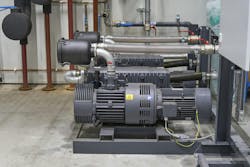The Hidden Cost of Poor Power Quality
Modern plants depend on reliable, high-quality power to maintain assets at peak performance, stick to production schedules, and deliver value to their customers. Poor power quality can cause problems that cascade through a business, increasing costs and disrupting throughput. In this article, we’ll discuss the real costs of poor power quality. We’ll also describe proven methods for detecting and resolving common power quality issues.
The costs of poor power quality
Power quality is impacted by several factors, the most common being voltage sags and surges, harmonics, spikes, and flicker.
When not corrected in time, power quality issues can cause outages that take down the whole plant. The costs of downtime can be devastating in terms of lost productivity, wasted resources, and extensive repairs. But even when power issues don’t lead to a shutdown, they can result in expensive problems. Here are just a few examples:
- Voltage sags can cause increased wear and tear on your equipment. This ratchets up costs in both the short and long term.
- In the short term, the premature wear and tear from voltage sags leads to higher maintenance costs and more frequent needs for part replacements. In the long term, all the strain on your assets will lead to breakdowns and, eventually, shorter asset lifespan.
- Voltage sags and surges also often lead to increased energy consumption, driving up energy costs for your plant.
- Harmonics, spikes, and other electrical disturbances can create problems with your production line. Even when power quality problems do not bring your plant offline, they can cause defects in your products. As time goes on, this can jeopardize your company’s reputation and customer relations.
These are just some of the ways poor power quality can drive up costs for a plant. Fortunately, there are easy fixes available. With the right tools and information, you can get ahead of power quality issues and keep your costs low.
Diagnosing and correcting PQ issues
A good power quality analyzer, coupled with the right software, can be an important tool for troubleshooting existing or potential power quality issues. Power quality tools help provide event data collection as well as data about energy cost and plant efficiency.
In some cases, the right tools can actually keep you a few steps ahead of problems by helping you predict and correct issues before they become serious.
Around 80% of power quality issues are caused by voltage sags. If you suspect this, you can use a multimeter to quickly check supply voltages at panels and subpanels. Sometimes, voltage dips are just a matter of loose wiring, which is an easy fix.
For events that happen periodically, a power quality analyzer would provide constant capture for each phase, providing detailed information like date, phase, amplitude, and duration. Power quality analyzers can be permanently or temporarily put in place for longer recording periods.
You can also use a power analyzer to identify harmonics, transients, and other electrical disturbances. Together with analytical software, your power quality analyzer can monitor and compare voltage and harmonic data to accurately predict distortions before they impact machine health.
Staying ahead of poor power quality
It’s a best practice to perform routine power quality tests, even when your plant isn’t experiencing any obvious electrical problems. Staying ahead of voltage sags and swells, as well as other disturbances, will keep your plant a few steps away from serious issues.
Poor power quality can cause devastating and expensive problems for any organization. Taking steps to improve your power quality can reduce maintenance costs, improve operational efficiency, and increase productivity.
About the Author

Jason Axelson
Jason is a subject matter expert at Fluke specializing in power quality, electrical test equipment, and product applications. With deep experience supporting both customers and distribution partners, he helps professionals select, operate, and troubleshoot a wide range of diagnostic tools, including power quality analyzers, battery testers, acoustic imagers, and thermal imagers. Jason regularly leads application-based training sessions, drawing on his hands-on knowledge to bridge the gap between technical challenges and practical solutions across industries.
